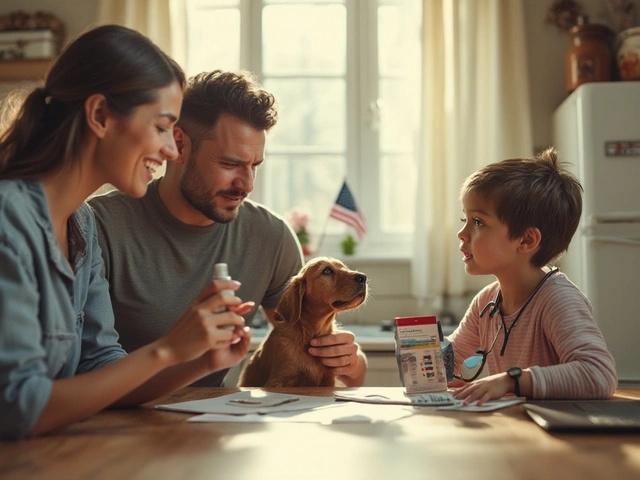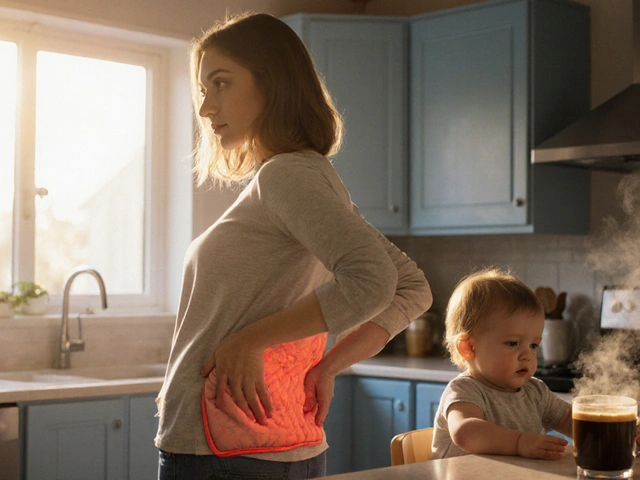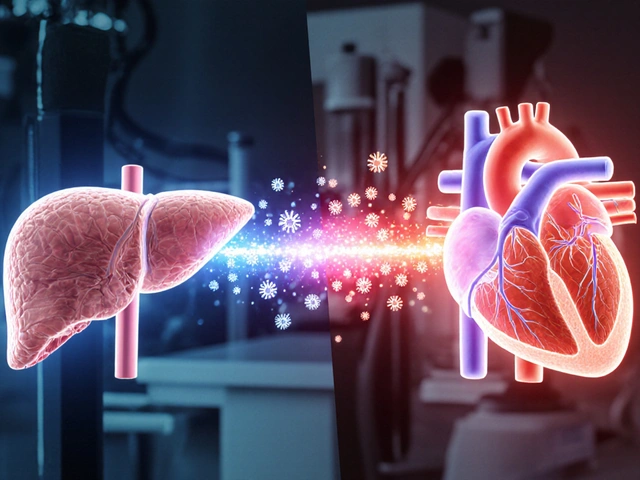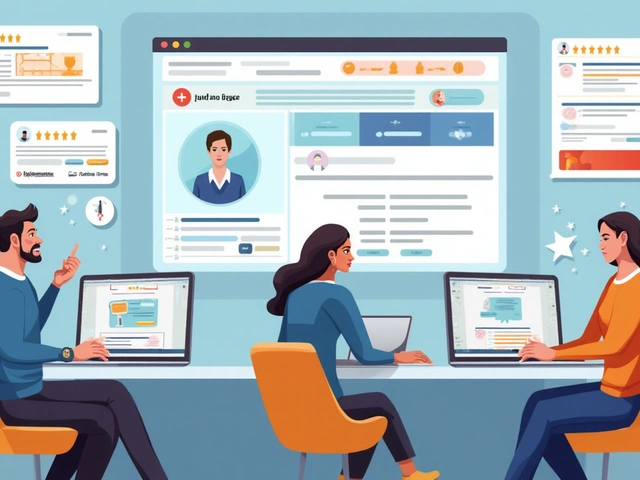When you pick up a prescription at the pharmacy, you might see two options: the familiar brand-name pill or a cheaper generic version. You’ve probably wondered - is the generic really the same? The answer isn’t just marketing. It’s science. And that science is called bioequivalence testing.
What Bioequivalence Testing Actually Measures
Bioequivalence testing doesn’t check if a generic drug looks the same or tastes the same. It checks whether your body absorbs and uses the drug in the exact same way as the brand-name version. The goal? To prove that both drugs deliver the same amount of active ingredient into your bloodstream at the same speed.The FDA requires two key measurements: AUC (area under the curve) and Cmax (peak concentration). AUC tells you how much of the drug your body absorbs over time - the total exposure. Cmax tells you how fast it gets there - the rate of absorption. For a generic to be approved, both values must fall within 80% to 125% of the brand-name drug’s numbers. That’s not a guess. It’s a strict scientific boundary based on decades of research.
These numbers come from studies with 24 to 36 healthy volunteers. They take the brand-name drug one day, then the generic another day - in a random order, with a washout period in between. Blood samples are taken every 15 to 30 minutes for hours. The data is analyzed to see if the curves match. If they do, the drugs are bioequivalent.
Why This Matters More Than You Think
You might think, “If it has the same active ingredient, it should work the same.” But that’s not always true. Two pills with the same ingredient can behave very differently in your body. Why? Because of how they’re made.The inactive ingredients - fillers, coatings, binders - affect how quickly the pill breaks down in your stomach. A generic with a slower-dissolving coating might release the drug too slowly. One with a faster coating might spike your blood levels too high. Both can cause problems: too little effect, or too much side effect.
Bioequivalence testing catches those differences before the drug ever reaches your medicine cabinet. That’s why a generic version of a blood thinner like warfarin can’t just copy the brand. Even small changes in absorption could be dangerous. That’s why some drugs - especially those with a narrow therapeutic index - get extra scrutiny. The FDA may require tighter bioequivalence ranges, like 90% to 111%, for these.
How It’s Different From Brand-Name Drug Testing
Brand-name drugs go through years of clinical trials. Hundreds, sometimes thousands, of patients with the actual disease are studied to prove the drug works and is safe. That costs billions.Generic manufacturers don’t do that. They don’t need to. The brand-name drug already proved safety and effectiveness. The generic only needs to prove it behaves the same in your body. That’s why bioequivalence studies use healthy volunteers - not patients. They’re testing absorption, not curing disease.
This is the core of the Hatch-Waxman Act of 1984. It created a faster, cheaper path for generics. The result? Today, 90% of prescriptions in the U.S. are filled with generics. But they cost only 23% of what brand-name drugs do. In 2020 alone, generics saved the U.S. healthcare system $313 billion.

Where Bioequivalence Testing Falls Short
Bioequivalence testing works brilliantly for pills and capsules taken by mouth. But it has limits.Take inhalers. You can’t easily measure how much drug reaches your lungs. Blood levels don’t tell you if the medication is hitting the right spot. For these, the FDA requires different tests - like lung deposition studies or clinical endpoint trials showing the same asthma control.
Same with topical creams. A generic steroid cream might absorb into your blood at the same rate as the brand. But does it penetrate deep enough into your skin to reduce inflammation? That’s harder to measure. The FDA now requires specific in vivo studies for complex topical products, not just blood tests.
And then there’s the issue of manufacturing. Even if two batches of a generic pass bioequivalence testing, consistency matters. The FDA inspects over 1,200 generic drug factories every year - domestic and foreign - to make sure quality doesn’t slip. One bad batch shouldn’t mean a whole line of pills fails.
What Patients Really Experience
A 2022 Consumer Reports survey of 1,200 people found that 87% saw no difference between their generic and brand-name drugs. Nine percent even said the generic worked better. Only 4% felt it was less effective.But here’s the catch: the 4% who noticed a difference? Most weren’t talking about the drug not working. They were talking about side effects - stomach upset, dizziness, rash. Those aren’t caused by the active ingredient. They’re caused by inactive ingredients. A different dye, filler, or flavoring can trigger a reaction in someone sensitive.
That’s why some patients stick with the brand. Not because the generic doesn’t work - but because their body reacts to something else in the pill. That’s not a failure of bioequivalence. It’s a personal tolerance issue. Pharmacists can help you switch to a different generic if that happens.
Still, a 2021 study found 32% of patients believe generics are less effective. That myth persists. It’s not based on science. It’s based on fear, old habits, or a single bad experience.

The Bigger Picture: Global Standards and Future Changes
The U.S. isn’t alone. The European Medicines Agency, Health Canada, Japan’s PMDA - they all use similar bioequivalence standards. The International Council for Harmonisation (ICH) ensures most countries follow the same 80%-125% rule. That’s why a generic made in India can be approved in the U.S. or the UK.But the future is changing. The FDA is now exploring computer modeling to predict how a drug behaves in the body - called PBPK modeling. This could reduce the need for human studies for some complex drugs. Imagine running simulations instead of recruiting 30 volunteers. It’s faster, cheaper, and just as accurate - if done right.
The FDA’s Generic Drug User Fee Amendments (GDUFA) have cut approval times from years to under a year. In 2022, 95% of applications met their review deadlines. That’s efficiency without cutting corners.
And the market keeps growing. The global generic drug market is on track to hit $781 billion by 2030. More patents are expiring. More generics are coming. Bioequivalence testing is the gatekeeper - making sure every one of them is safe and reliable.
What You Can Trust
You can trust that a generic drug approved by the FDA has been tested to perform just like the brand. It’s not cheaper because it’s weaker. It’s cheaper because it doesn’t need to repeat expensive clinical trials.It has the same active ingredient. Same strength. Same dosage form. Same intended use. And now, thanks to bioequivalence testing, you know it behaves the same way in your body.
If you’ve had a bad experience with a generic, talk to your pharmacist. Maybe it’s the filler. Maybe you need a different brand of generic. But don’t assume the drug itself is flawed. The science behind it is solid.
When you choose a generic, you’re not settling. You’re choosing a proven, regulated, and cost-effective option that millions of people rely on every day - safely.
Does bioequivalence mean a generic drug works exactly like the brand?
Yes - if it passes bioequivalence testing. The FDA requires that generic drugs deliver the same amount of active ingredient into your bloodstream at the same rate as the brand-name version. This means they work the same way in your body. Differences in side effects are usually due to inactive ingredients, not the drug itself.
Why do some people say generics don’t work as well?
Most reports of generics not working are due to placebo effects, changes in inactive ingredients (like dyes or fillers), or individual sensitivities. A 2022 Consumer Reports survey showed 87% of users saw no difference. The 4% who noticed a difference often reported minor side effects - not reduced effectiveness. Switching to a different generic manufacturer can sometimes resolve these issues.
Are all generic drugs tested the same way?
No. Standard oral tablets use blood tests (pharmacokinetic studies). But for inhalers, creams, or eye drops, direct measurement in the body isn’t possible. For these, the FDA requires alternative methods like lung deposition studies, clinical endpoint trials, or specialized in vivo tests. Complex generics often need more than one study to prove equivalence.
How long does bioequivalence testing take?
A typical bioequivalence study with healthy volunteers takes 2 to 4 months to complete. But the entire ANDA approval process - including manufacturing review and FDA inspection - usually takes 10 to 12 months. The FDA has improved this timeline significantly since launching the GDUFA program, with 95% of applications meeting their review deadlines in 2022.
Can I trust generics made overseas?
Yes. The FDA inspects over 1,200 generic drug manufacturing facilities every year - half of them outside the U.S. All generics sold in the U.S., regardless of origin, must meet the same strict quality, purity, and bioequivalence standards. The FDA has the same authority over foreign plants as it does over domestic ones.






Let’s be real-bioequivalence is a statistical loophole dressed up as science. 80-125%? That’s a 45% swing. If your blood pressure med dips below 80% of the brand’s absorption, you’re not getting therapeutic levels. And if it spikes above 125%? Congrats, you just overdosed on a $2 pill. The FDA calls it ‘acceptable variation.’ I call it Russian roulette with your kidneys.
November 12David Barry